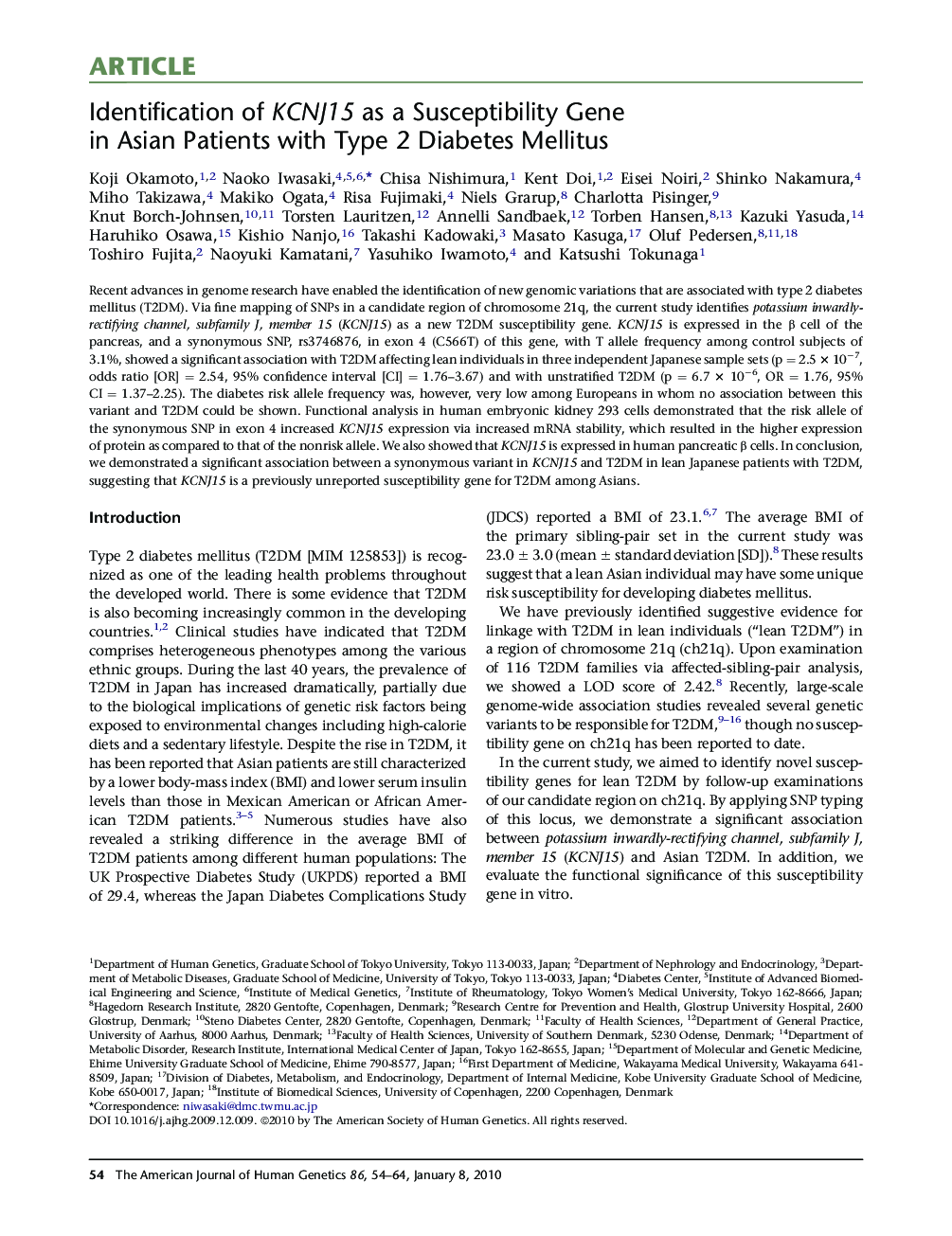| Article ID | Journal | Published Year | Pages | File Type |
|---|---|---|---|---|
| 2811729 | The American Journal of Human Genetics | 2010 | 11 Pages |
Recent advances in genome research have enabled the identification of new genomic variations that are associated with type 2 diabetes mellitus (T2DM). Via fine mapping of SNPs in a candidate region of chromosome 21q, the current study identifies potassium inwardly-rectifying channel, subfamily J, member 15 (KCNJ15) as a new T2DM susceptibility gene. KCNJ15 is expressed in the β cell of the pancreas, and a synonymous SNP, rs3746876, in exon 4 (C566T) of this gene, with T allele frequency among control subjects of 3.1%, showed a significant association with T2DM affecting lean individuals in three independent Japanese sample sets (p = 2.5 × 10−7, odds ratio [OR] = 2.54, 95% confidence interval [CI] = 1.76–3.67) and with unstratified T2DM (p = 6.7 × 10−6, OR = 1.76, 95% CI = 1.37–2.25). The diabetes risk allele frequency was, however, very low among Europeans in whom no association between this variant and T2DM could be shown. Functional analysis in human embryonic kidney 293 cells demonstrated that the risk allele of the synonymous SNP in exon 4 increased KCNJ15 expression via increased mRNA stability, which resulted in the higher expression of protein as compared to that of the nonrisk allele. We also showed that KCNJ15 is expressed in human pancreatic β cells. In conclusion, we demonstrated a significant association between a synonymous variant in KCNJ15 and T2DM in lean Japanese patients with T2DM, suggesting that KCNJ15 is a previously unreported susceptibility gene for T2DM among Asians.
